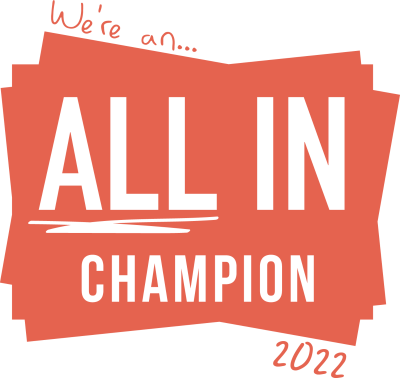AGEISM IN ADVERTISING: IF PEOPLE FEEL YOUNG, WHY TALK TO THEM LIKE THEY’RE OLD?
MullenLowe’s Invisible Powerhouse study found ageism is endemic in adland, despite the over-55s wielding £6tn in assets, so here’s how brands should ditch the tropes, clichés and presumptions.
From viral TikTok dances to collaborations with YouTubers, there is a profound obsession in our industry with appealing to Gen Z. Brands want to secure customer loyalty right at the moment younger people enter the market and, in theory, generate long-term customer value from them.
And there is value in that. When I was young, my godparents set up a Lloyds bank account with £1 in it for me (very generous in 1969). I’m still a Lloyds customer more than 50 years later, so we can assume my lifetime value to the bank must be pretty good.
While there are brands out there that are getting their approach right, too many are doing it wrong, as our recent Invisible Powerhouse research confirmed. Older customers have been left feeling alienated (88% of people over the age of 55 reported feeling unhappy with the way the industry treats them), which is particularly damaging in an ageing society, where people over 55 now hold nearly 70% of all UK household wealth. We need to be doing more to connect with this age group, but how?
Do we all stop ageing at 25?
While I’m not quite 55, I’m close. I realise that a 20-year-old might look at me and think I haven’t got long left, but I still feel like I have a lot more life to live. In fact, I like to think I’ve got as much to go as I’ve already done.
Of course, I know I’m physically older: I can’t run half marathons as fast as I used to, and I have more responsibilities than I had in my 20s, but that doesn’t mean I’ve lost my younger mentality. We all age physically, but our attitude of mind matures at a slower rate. We don’t automatically become cookie-cutter pensioners as we near retirement age, and that’s where advertising repeatedly gets it wrong.
Too often we see ads depicting this demographic as a stereotypically elderly group in need of pity and help. Or, at the other extreme, we see octogenarians lionised as ultra-marathon runners and silver foxes, which is equally erroneous. Brands need to champion “normal” representation, but what does this look like, and why does so much of adland continue to struggle with this concept?
Telling it how it is – with humour along the way
To me, normal simply looks relevant. People want to see themselves in a relevant context and be spoken to in a relevant way about a relevant product.
At our Invisible Powerhouse roundtable in April, we discussed this in detail. Someone who’s over 55 already knows they’re getting older and that probably their age is starting to show. Maybe they want to hold back the effects of time with anti-ageing creams, and maybe they really don’t. Maybe they feel like they are just hitting their stride, and the best in life is yet to come. Either way, they want to see themselves represented – with authenticity, empathy, perhaps with a bit of humour along the way.
Tricia Cusden, chief executive of Look Fabulous Forever, explained this point well. If, for example, your audience is made up exclusively of older people, then of course you should tailor your advertising to them. However, this shouldn’t be the only representation of older members of society that we see in advertising. People over the age of 55 still buy products with wide appeal, and we should see them represented in these communications not because they’re old, but because they exist.
Addressing the snowball effect
There are two key areas we must address to tackle this problem. The first is more nuanced research that enables more nuanced and better-informed representation of the huge range of Britons aged 55-plus. Our Invisible Powerhouse project is a first step in addressing this.
The second is diversity within teams. The snowball effect currently taking place is inevitable as a very narrow group of people write the briefs and create the work in the first place.
The last IPA Census showed that the average age of employees in advertising is 34, and only 6% of staff in member agencies are over 50 – which is pretty shocking. If you have a 30-year-old male copywriter trying to write an ad for a 60-year-old woman, he is more likely to be picturing his mum (or his grandma) than his work colleagues, and the result is often a one dimensional and stereotypical depiction.
We recently created a Pride campaign and asked our internal Pride committee to go through all the work and feedback on whether this was a true representation of this group and they saw themselves reflected in it. It’s only having such diversity of people around the table that allows you to have an informed and objective view.
Communicating with authenticity
Our research also showed us that people want to laugh. The over-55s grew up in a world where ads were often longer, with stronger narratives and more humour than we see now. Our research suggests humour is both lacking and sorely missed in advertising aimed at older adults nowadays. Humour isn’t always going to work, and sometimes it’s not appropriate, but it’s a great way to normalise and soften challenging situations like physical decline. Laughing when bits of us drop off is preferable by far to seeing ourselves portrayed as frail and lonely with a blanket draped over our knees.
To communicate with authenticity, we need true representation, humour and nuance, which we can only achieve through better understanding and more diverse teams. We don’t want to deny the ageing experience, so let’s not just create ads for awards juries, let’s create them for the audience.
